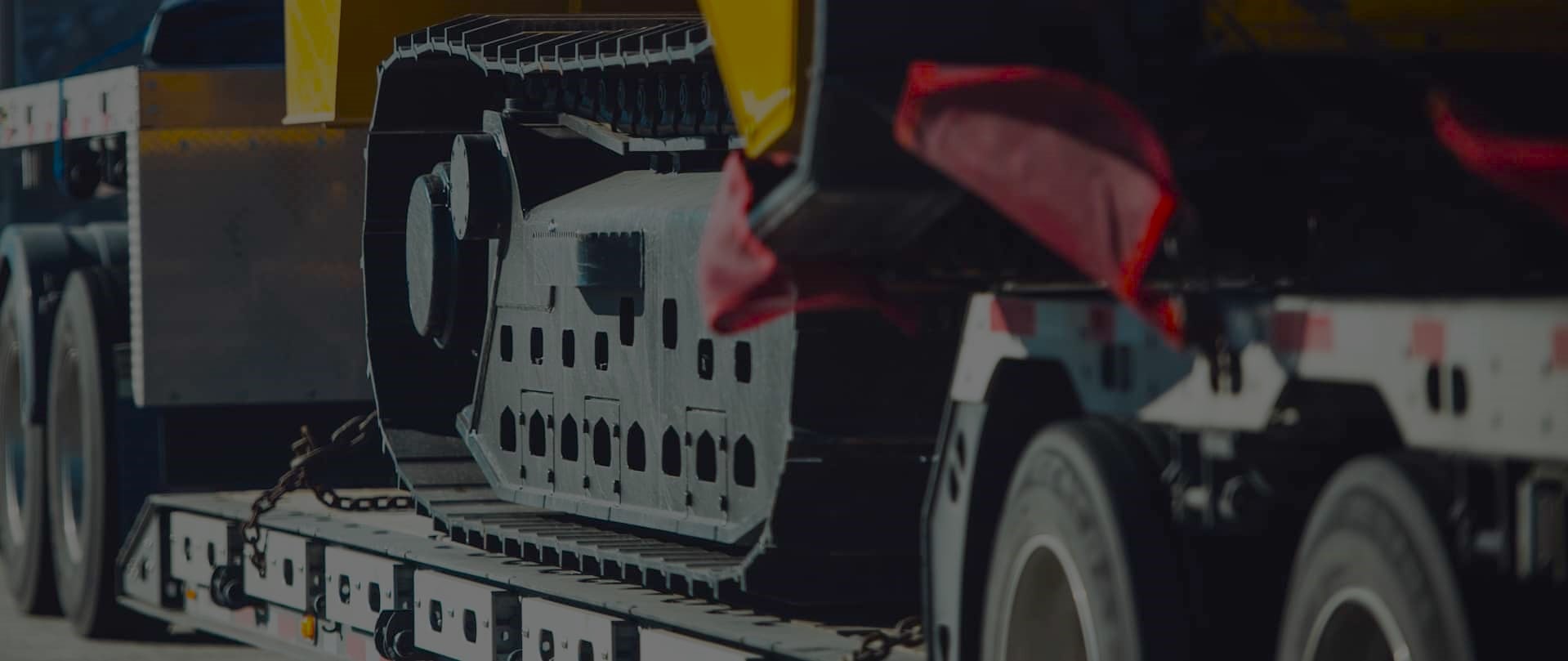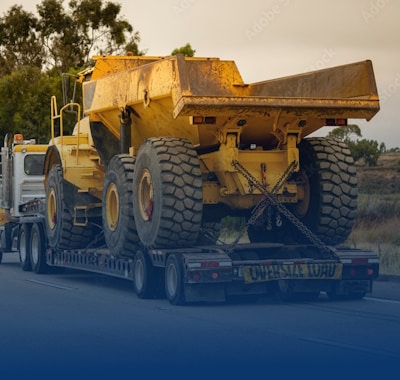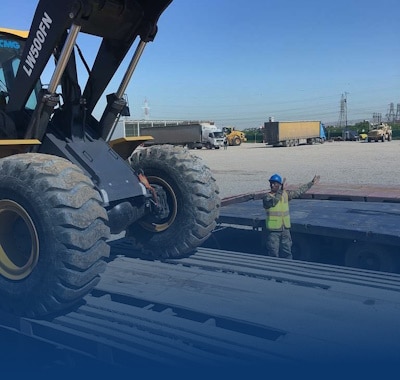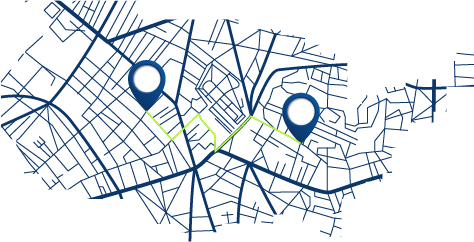The Process of How Logistics Teams Handle Permits for Superloads
Freedom Heavy Haul can offer expedited Pickup and Delivery for any size shipment anywhere in the USA. Contact us today for No Hassle, No Pressure Pricing.
Moving massive machinery requires precision at every stage. Oversized loads demand specialized planning, particularly when securing permits that meet strict state regulations. Without proper authorization, delays can escalate costs and jeopardize project timelines.
Industry leaders like Freedom Heavy Haul emphasize this reality. One project manager notes: “The difference between success and gridlock often lies in anticipating permit requirements before wheels start turning.” This proactive approach ensures compliance while maintaining operational momentum.
Our team prioritizes three pillars for heavy haul efficiency: route analysis, weight distribution planning, and real-time communication with regulatory agencies. These steps minimize surprises during transport while keeping safety as the driving force.
This article explores best practices for managing legal requirements and physical challenges. We’ll break down regional variance in permit rules, equipment preparation standards, and strategies for coordinating multi-state loads. Practical insights from seasoned professionals will guide each discussion point.
Through case studies and compliance checklists, we demonstrate how meticulous planning transforms complex transports into predictable operations. Let’s build a roadmap for moving your critical assets with confidence.
Understanding Oversize Loads and Permits
Transporting industrial equipment demands precise classification. Oversize loads typically exceed standard legal dimensions for width (8’6”), height (13’6”), or length (53’). Superloads push these limits further, often requiring specialized equipment and multi-state coordination.
What Qualifies as an Oversize Load?
States set unique thresholds, but common metrics include:
- Width: Over 12 feet triggers permit requirements in most regions
- Height: Exceeding 14’6” often needs route clearance checks
- Weight: Axle loads surpassing 80,000 lbs require structural analysis
One DOT specialist explains: “Superloads aren’t just big – they redefine what’s physically possible on our roads.”
Why Permits Matter
Authorization documents serve dual purposes. They verify safety compliance and mandate specific travel conditions like:
- Approved routes avoiding low bridges
- Time-of-day restrictions in urban zones
- Escort vehicle configurations
Our nationwide shipping solutions address these variables through early coordination with state agencies. Federal rules provide baseline standards, but local amendments frequently update weight limits and seasonal road bans.
Proactive permit management prevents costly delays. Last-minute applications risk project timelines, especially when crossing multiple jurisdictions. We prioritize early submissions with buffer periods for regulatory reviews.
How Logistics Teams Handle Permits for Superloads
Securing authorization for oversized cargo hinges on meticulous coordination between multiple stakeholders. Every transport operation requires balancing three critical elements: public safety, operational efficiency, and regulatory compliance. Precision begins with exact measurements of dimensions and weight distribution across all axles.
Coordinating Safety, Efficiency, and Compliance
Our team verifies each shipment against state-specific thresholds before wheels turn. For example, a recent project involved moving industrial generators weighing over 250,000 pounds. By analyzing axle loads and bridge clearances upfront, we ensured compliance with regional weight limits while maintaining schedule integrity.
Real-time communication channels prove vital during transit. GPS tracking and constant updates between drivers and command centers allow immediate adjustments. One Freedom Heavy Haul specialist explains: “You can’t manage what you don’t measure – or monitor.”
Seasoned professionals leverage decades of experience when navigating permit processes. They anticipate seasonal road restrictions and optimize routes to minimize escort vehicle requirements. This proactive stance reduces delays and keeps projects within budget.
Every decision prioritizes two non-negotiables: protecting infrastructure and delivering shipments intact. Through layered safety protocols and rigorous weight limit checks, we transform complex transports into predictable successes.
Step-by-Step Permit Application Process
Efficient authorization starts with exact measurements and strategic planning. We prioritize millimeter precision in load details to meet state thresholds. One oversight in documentation can delay projects by weeks—or trigger outright rejections.
Measuring Loads and Planning the Route
Our team uses 3D scanning tools to verify axle weights and heights in feet. Bridge clearance maps and turning radius simulations come next. “Documentation errors cause 37% of first-time application rejections,” notes a Midwestern DOT coordinator. This data-driven approach ensures cargo specs align with regional limits.
Route planning software flags restricted zones and seasonal road closures. Escort vehicle requirements are calculated based on cargo width and local mandates. We address potential bottlenecks before submitting paperwork.
Submitting Applications and Following Up
Online portals streamline submissions, but incomplete forms remain a top hurdle. We attach certified weight reports, engineered route maps, and safety protocols. States like Texas process permits in 48 hours—coastal regions may require five business days.
Daily agency follow-ups prevent delays. Real-time dashboards track approval statuses, enabling swift adjustments. Contingency routes are pre-approved to handle unexpected detours or weather issues.
Post-approval, we reconfirm escort configurations and travel windows. This systematic method turns complex applications into predictable workflows, protecting timelines and budgets.
Navigating State-Specific Regulations and Guidelines
State borders redefine the rules for moving oversized cargo. Regional mandates dictate everything from travel hours to infrastructure access, requiring adaptable strategies for compliant transportation. We decode these variations to keep your projects moving.
Understanding Travel Windows and Restrictions
Mississippi exemplifies regional complexity. Oversize loads can’t operate during rush hours (6-9 AM, 4-7 PM) or on holidays. Similar patterns emerge nationwide:
| State | Operating Hours | Weight Limits | Bridge Restrictions |
|---|---|---|---|
| Texas | Sunset to sunrise | 160k lbs max | No steel decks |
| Ohio | Weekdays only | 120k lbs per axle | Height ≤14’ |
| California | No weekend travel | 80k lbs standard | Route pre-certification |
One DOT coordinator warns:
“Arizona’s summer road bans differ from winter rules – assuming uniformity causes 40% of first-time violations.”
Weight thresholds directly impact route viability. Excess axle loads trigger bridge reinforcements or detours, adding days to schedules. We cross-reference cargo specs with seasonal road conditions to avoid surprises.
Documentation needs shift across jurisdictions. Alabama requires notarized escorts plans; Nevada mandates 72-hour notice for agricultural zones. Our team pre-files route surveys and structural analysis reports, turning bureaucratic hurdles into checkpoints.
Proactive compliance protects shipments and budgets. Knowing local sunrise-to-sunset rules or temporary construction zones prevents costly mid-route stoppages. Let state expertise steer your cargo through regulatory mazes.
Managing Escort Vehicles and Safety Protocols
Escort vehicles transform high-risk transports into controlled operations. These specialized units create protective buffers around oversized cargo, especially when navigating tight corridors or aging bridges. Their presence ensures public safety while meeting strict state mandates.
Escort Vehicle Requirements and Deployment
State rules dictate minimum standards for these critical assets. Most regions require:
- Flashing amber lights visible from 500 feet
- Red flags marking load extremities
- Two-way radios for real-time coordination
| State | Minimum Escorts | Lighting Rules | Travel Days |
|---|---|---|---|
| Florida | 1 front + 1 rear | Dual rotating beacons | Weekdays only |
| Illinois | 2 rear vehicles | LED strobes | Sunrise to sunset |
| Colorado | 1 pilot car | 360° visibility | No holiday travel |
A Midwest DOT supervisor notes: “Escort teams prevent 80% of bridge strikes through proactive lane management.” We schedule these assets 14 days ahead, aligning with peak travel windows and infrastructure limits.
Implementing Safety Features for Pilot Cars
Pilot vehicles require more than basic equipment. Our fleet includes:
- Height poles detecting overhead obstructions
- GPS-linked bridge clearance databases
- Emergency signage for sudden stops
Reflective chevrons on trailers increase visibility by 40% in low-light conditions. Drivers follow state-specific guidelines for maintaining safe distances – typically 300 feet ahead and behind the load.
Regular equipment checks ensure compliance. We replace worn tires and test communication systems before each haul. This meticulous approach keeps communities safe while delivering outsized cargo on schedule.
Cost Factors and Budgeting for Permits
Budgeting for oversized cargo authorization requires understanding multiple financial variables. Fees fluctuate based on height, length, and regional road policies. A single miscalculation can inflate expenses by 20% or more.
Understanding Permit Fees and Additional Charges
Base costs often start at $50-$300 per state. However, complex routes with low bridges or urban zones add surcharges. One Midwest DOT agent states: “Escort vehicles alone account for 35% of total permit expenses in our region.”
Key cost drivers include:
- Pilot car requirements (up to $150/hour)
- Route surveys verifying height clearances
- Expedited processing fees ($500+)
Strategies to Optimize Permit Costs
Combine multiple shipments when possible. This reduces cumulative fees and maximizes trailer space. We prioritize direct routes that minimize mileage and escort hours.
Pre-planning avoids rush processing charges. Early submissions allow standard review timelines – typically 3-5 business days. Partnering with experienced providers also cuts costs through established relationships with state agencies.
Remember: The cheapest option often ignores hidden risks. Our team balances fiscal responsibility with compliance, ensuring your cargo moves safely without budget surprises.
Overcoming Common Challenges in Permit Acquisition
Navigating permit acquisition for oversized loads often feels like solving a dynamic puzzle. Regulatory shifts and infrastructure surprises test even seasoned professionals. We’ve streamlined strategies to transform these hurdles into manageable steps.
Handling Processing Delays and Changing Regulations
State agencies process applications at varying speeds – some complete reviews in 48 hours, others take weeks. A Northeast DOT official confirms: “Last-minute submissions face 73% higher rejection rates than early filings.” We counter this by submitting documents 30 days pre-transport.
Regulatory updates add layers of complexity. Weight limits or width restrictions often change without warning. Our team monitors legislative alerts and adjusts route plans proactively. Partnering with streamlined permit solutions ensures compliance amid shifting requirements.
Addressing Unexpected Route Adjustments
Construction zones and weather disruptions demand rapid rerouting. We pre-map three alternate paths using bridge clearance databases. This preparation prevents trailer damage and maintains timelines when primary routes become impassable.
Real-time coordination with driver teams and pilot cars is critical. Two-way radios relay detour updates instantly. One recent project avoided a 12-hour delay by diverting through pre-approved rural roads when flooding blocked Interstate access.
Managing these variables requires balancing precision with adaptability. Through contingency planning and agency partnerships, we turn permit challenges into predictable milestones.
Leveraging Permit Service Providers and Technology
Mastering permit acquisition requires strategic partnerships. Third-party specialists decode complex size weight limits while managing multi-state paperwork. Their expertise transforms regulatory hurdles into streamlined workflows.
Expert Navigation Through Red Tape
Specialized agencies maintain updated databases of regional axle weight rules. One provider reduced permit approval times by 62% for wind turbine components through pre-validated route templates. “We bridge the gap between cargo specs and ever-changing regulations,” explains a permit service CEO.
Key advantages include:
- 24/7 monitoring of size weight regulation updates
- Automated alerts for bridge clearance changes
- Direct lines to state DOT reviewers
Digital Tools for Continuous Compliance
GPS-enabled platforms now track pilot car positions and cargo dimensions in real time. Our team uses cloud-based systems that flag potential axle weight violations before they occur. These tools cut documentation errors by 41% compared to manual methods.
Mobile apps provide instant access to:
- Live traffic conditions affecting size weight limits
- Digital permit repositories
- Escort vehicle checklists
When a Midwest company transported 18-foot-wide reactors, integrated software adjusted routes around sudden road closures. This tech-forward approach kept the project on schedule despite three weather-related detours.
Combining human expertise with digital precision creates a safety net for critical transports. Our partners at Freedom Heavy Haul prove daily that smart collaboration elevates both compliance and efficiency.
Wrapping Up the Heavy Haul Permit Journey
Successfully navigating heavy haul permits demands equal parts precision and adaptability. From verifying equipment specifications to mapping multi-state corridors, every detail matters – especially for loads exceeding 150,000 pounds. Our team transforms this complexity into streamlined workflows.
State-specific rules remain the cornerstone of compliance. Texas’ sunset-to-sunrise windows contrast with Ohio’s weekday-only policies, requiring tailored strategies. We cross-reference cargo dimensions with regional requirements, ensuring seamless transitions across borders.
Timely submissions prevent 80% of authorization delays. As one Midwest DOT official observed: “Early applications with millimeter-accurate measurements rarely face rejections.” This principle guides our approach for loads exceeding standard limits, where route surveys and axle weight reports prove non-negotiable.
Freedom Heavy Haul combines decades of expertise with real-time tracking systems. Whether moving 150,000-pound turbines or modular refineries, we prioritize infrastructure safety and schedule integrity. Let our permit mastery turn regulatory challenges into your competitive advantage.







